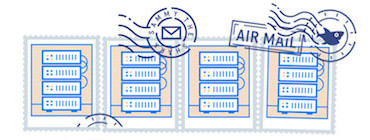// Tutorial //
How To Install Linux, Apache, MySQL, PHP (LAMP) stack on Ubuntu

Not using Ubuntu 12.04?Choose a different version or distribution.
Status: Deprecated
This article covers a version of Ubuntu that is no longer supported. If you are currently operate a server running Ubuntu 12.04, we highly recommend upgrading or migrating to a supported version of Ubuntu:
- Upgrade to Ubuntu 14.04.
- Upgrade from Ubuntu 14.04 to Ubuntu 16.04
- Migrate the server data to a supported version
Reason: Ubuntu 12.04 reached end of life (EOL) on April 28, 2017 and no longer receives security patches or updates. This guide is no longer maintained.
About LAMP
LAMP stack is a group of open source software used to get web servers up and running. The acronym stands for Linux, Apache, MySQL, and PHP. Since the virtual private server is already running Ubuntu, the linux part is taken care of. Here is how to install the rest.
Set Up
The steps in this tutorial require the user to have root privileges on your VPS. You can see how to set that up in the Initial Server Setup in steps 3 and 4.
Step 1: Install Apache
Apache is a free open source software which runs over 50% of the world’s web servers.
To install apache, open terminal and type in these commands:
sudo apt-get update sudo apt-get install apache2
That’s it. To check if Apache is installed, direct your browser to your server’s IP address (eg. http://12.34.56.789). The page should display the words “It works!" like this.
How to Find your Server’s IP address
You can run the following command to reveal your server’s IP address.
ifconfig eth0 | grep inet | awk '{ print $2 }'
Step 2: Install MySQL
MySQL is a powerful database management system used for organizing and retrieving data
To install MySQL, open terminal and type in these commands:
sudo apt-get install mysql-server libapache2-mod-auth-mysql php5-mysql
During the installation, MySQL will ask you to set a root password. If you miss the chance to set the password while the program is installing, it is very easy to set the password later from within the MySQL shell.
Once you have installed MySQL, we should activate it with this command:
sudo mysql_install_db
Finish up by running the MySQL set up script:
sudo /usr/bin/mysql_secure_installation
The prompt will ask you for your current root password.
Type it in.
Enter current password for root (enter for none): OK, successfully used password, moving on...
Then the prompt will ask you if you want to change the root password. Go ahead and choose N and move on to the next steps.
It’s easiest just to say Yes to all the options. At the end, MySQL will reload and implement the new changes.
By default, a MySQL installation has an anonymous user, allowing anyone to log into MySQL without having to have a user account created for them. This is intended only for testing, and to make the installation go a bit smoother. You should remove them before moving into a production environment. Remove anonymous users? [Y/n] y ... Success! Normally, root should only be allowed to connect from 'localhost'. This ensures that someone cannot guess at the root password from the network. Disallow root login remotely? [Y/n] y ... Success! By default, MySQL comes with a database named 'test' that anyone can access. This is also intended only for testing, and should be removed before moving into a production environment. Remove test database and access to it? [Y/n] y - Dropping test database... ... Success! - Removing privileges on test database... ... Success! Reloading the privilege tables will ensure that all changes made so far will take effect immediately. Reload privilege tables now? [Y/n] y ... Success! Cleaning up...
Once you're done with that you can finish up by installing PHP.
Step 3: Install PHP
PHP is an open source web scripting language that is widely use to build dynamic webpages.
To install PHP, open terminal and type in this command.
sudo apt-get install php5 libapache2-mod-php5 php5-mcrypt
After you answer yes to the prompt twice, PHP will install itself.
It may also be useful to add php to the directory index, to serve the relevant php index files:
sudo nano /etc/apache2/mods-enabled/dir.conf
Add index.php to the beginning of index files. The page should now look like this:
<IfModule mod_dir.c>
DirectoryIndex index.php index.html index.cgi index.pl index.php index.xhtml index.htm
</IfModule>
PHP Modules
PHP also has a variety of useful libraries and modules that you can add onto your virtual server. You can see the libraries that are available.
apt-cache search php5-
Terminal will then display the list of possible modules. The beginning looks like this:
php5-cgi - server-side, HTML-embedded scripting language (CGI binary) php5-cli - command-line interpreter for the php5 scripting language php5-common - Common files for packages built from the php5 source php5-curl - CURL module for php5 php5-dbg - Debug symbols for PHP5 php5-dev - Files for PHP5 module development php5-gd - GD module for php5 php5-gmp - GMP module for php5 php5-ldap - LDAP module for php5 php5-mysql - MySQL module for php5 php5-odbc - ODBC module for php5 php5-pgsql - PostgreSQL module for php5 php5-pspell - pspell module for php5 php5-recode - recode module for php5 php5-snmp - SNMP module for php5 php5-sqlite - SQLite module for php5 php5-tidy - tidy module for php5 php5-xmlrpc - XML-RPC module for php5 php5-xsl - XSL module for php5 php5-adodb - Extension optimising the ADOdb database abstraction library php5-auth-pam - A PHP5 extension for PAM authentication [...]
Once you decide to install the module, type:
sudo apt-get install name of the module
You can install multiple libraries at once by separating the name of each module with a space.
Congratulations! You now have LAMP stack on your droplet!
Step 4: RESULTS — See PHP on your Server
Although LAMP is installed, we can still take a look and see the components online by creating a quick php info page
To set this up, first create a new file:
sudo nano /var/www/info.php
Add in the following line:
<?php phpinfo(); ?>
Then Save and Exit.
Restart apache so that all of the changes take effect:
sudo service apache2 restart
Finish up by visiting your php info page (make sure you replace the example ip address with your correct one): http://12.34.56.789/info.php
It should look similar to this.
See More
After installing LAMP, you can Set Up phpMyAdmin, Install WordPress, go on to do more with MySQL (A Basic MySQL Tutorial), Create an SSL Certificate, or Install an FTP Server.
Thanks for learning with the DigitalOcean Community. Check out our offerings for compute, storage, networking, and managed databases.
This textbox defaults to using Markdown to format your answer.
You can type !ref in this text area to quickly search our full set of tutorials, documentation & marketplace offerings and insert the link!
Get started for free
Enter your email to get $200 in credit for your first 60 days with DigitalOcean.
New accounts only. By submitting your email you agree to our Privacy Policy.




The defaults should be good for the majority of users, we will be writing additional MySQL articles specifically geared towards tuning it for higher performance and explaining some of the most common tune variables.
I have installed Apache, when i go to install mySQL i get the following error in my terminal:
Package php5-mysql is not available, but is referred to by another package. This may mean that the package is missing, has been obsoleted, or is only available from another source
E: Unable to locate package libapache2-mod-auth-mysql E: Package ‘php5-mysql’ has no installation candidate
@flavioafa: You do not need that package on Ubuntu 13.10, you can simply ignore it.
teddy, I much prefer that they give the actual methods for installing these from the cmd line, rather than suggesting an automated install. You don’t learn anything doing it through tasksel.
Hi,
I take an error message when I tried to connect MySQL DB from my Play Framework application:
“Cannot connected to the database, Communications link failure The last packet sent successfully to the server was 0 milliseconds ago. The driver has not received any packets from the server.”
and solved the problem like this:
It related with mysql configuration file. You must open /etc/mysql/my.cnf: sudo nano /etc/mysql/my.cnf
and change bind-address’s default value (127.0.0.1) with your ip address: bind-address = ?.?.?.?
then problem will be solved.
Maybe It can help to some people encounter the same problem.
Kindly use my script in install in just a click.
https://github.com/MohamedIdris45/Basic-Setup/blob/master/LAMP.sh
Should we login as root for this or demo name?
For anyone getting the ‘unable to find package’ error for LAMP.
Type this: sudo apt-get install lamp-server^
very useful thank you so much grazieeeeeeeeee
How to Install Apache on RHEL/Centos 7